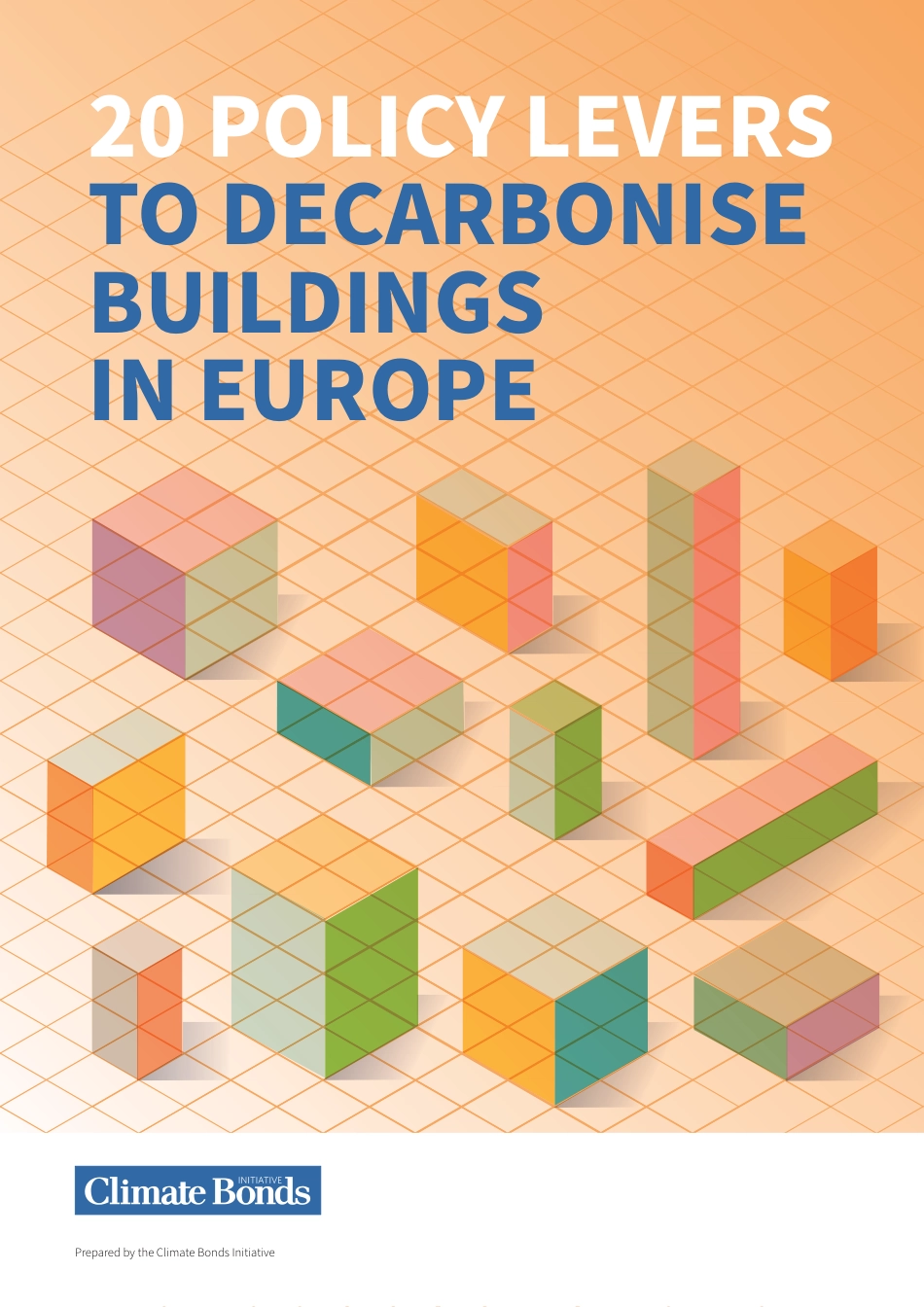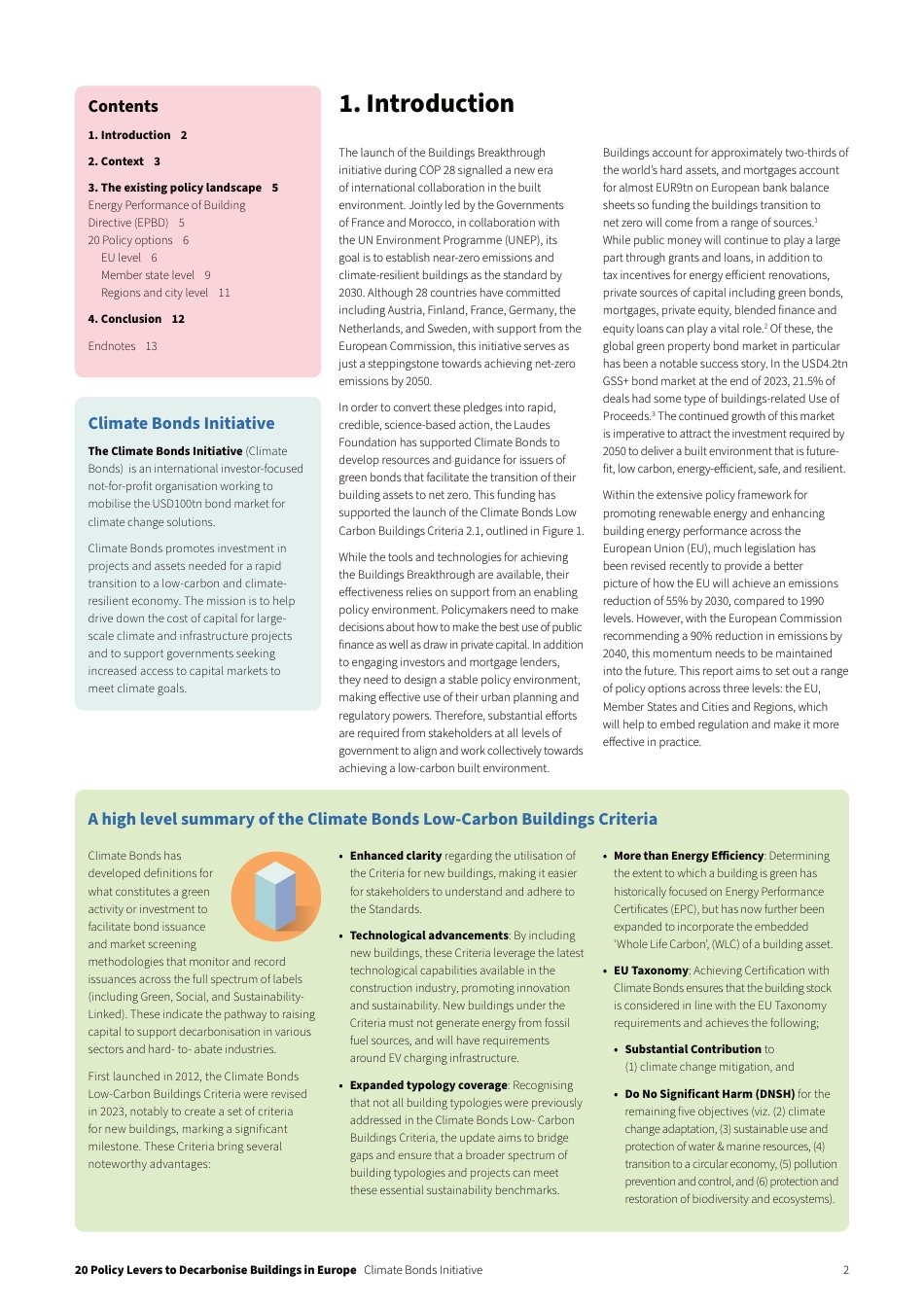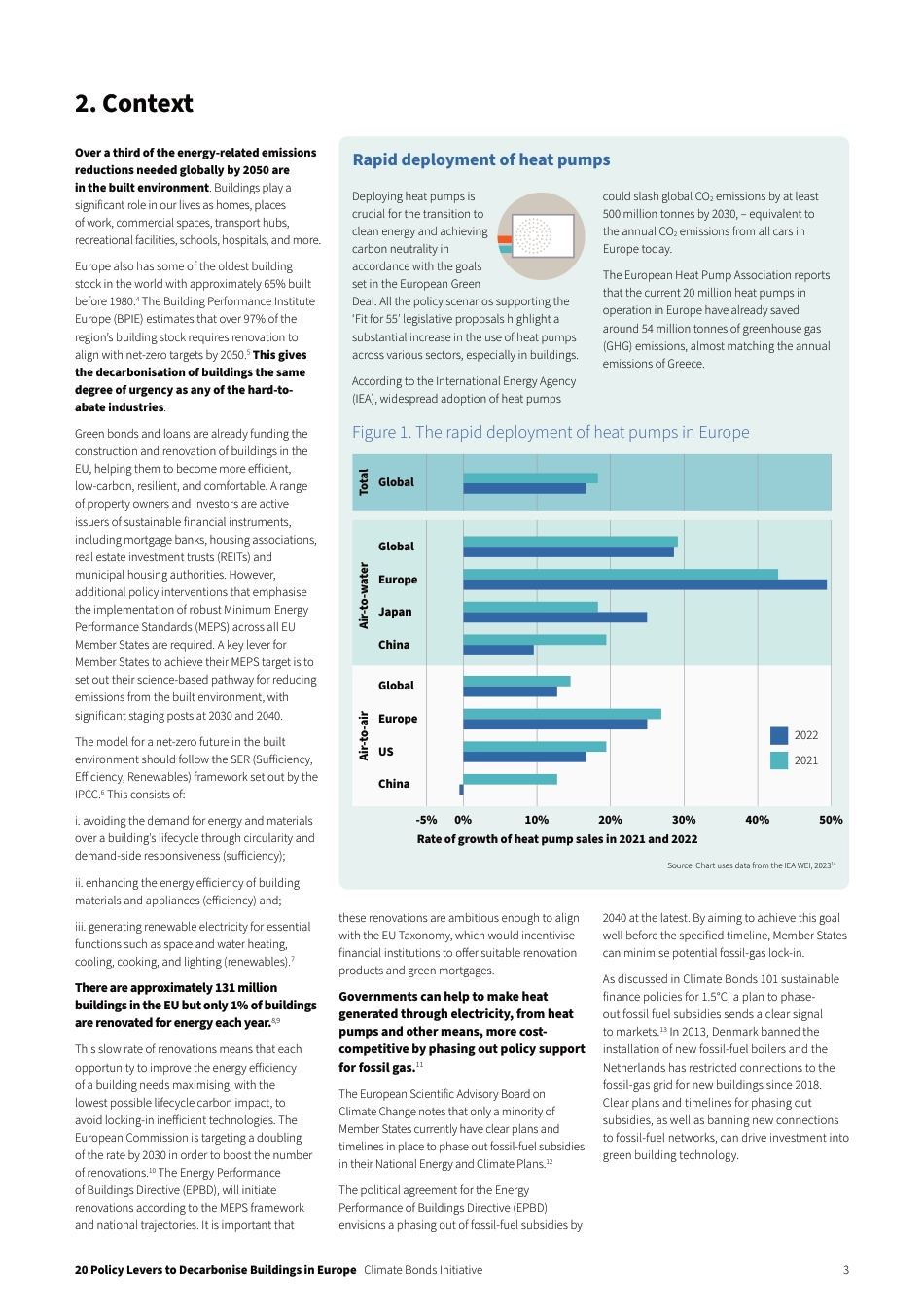20PolicyLeverstoDecarboniseBuildingsinEuropeClimateBondsInitiative1PreparedbytheClimateBondsInitiative20POLICYLEVERSTODECARBONISEBUILDINGSINEUROPE20PolicyLeverstoDecarboniseBuildingsinEuropeClimateBondsInitiative2ThelaunchoftheBuildingsBreakthroughinitiativeduringCOP28signalledaneweraofinternationalcollaborationinthebuiltenvironment.JointlyledbytheGovernmentsofFranceandMorocco,incollaborationwiththeUNEnvironmentProgramme(UNEP),itsgoalistoestablishnear-zeroemissionsandclimate-resilientbuildingsasthestandardby2030.Although28countrieshavecommittedincludingAustria,Finland,France,Germany,theNetherlands,andSweden,withsupportfromtheEuropeanCommission,thisinitiativeservesasjustasteppingstonetowardsachievingnet-zeroemissionsby2050.Inordertoconvertthesepledgesintorapid,credible,science-basedaction,theLaudesFoundationhassupportedClimateBondstodevelopresourcesandguidanceforissuersofgreenbondsthatfacilitatethetransitionoftheirbuildingassetstonetzero.ThisfundinghassupportedthelaunchoftheClimateBondsLowCarbonBuildingsCriteria2.1,outlinedinFigure1.WhilethetoolsandtechnologiesforachievingtheBuildingsBreakthroughareavailable,theireffectivenessreliesonsupportfromanenablingpolicyenvironment.Policymakersneedtomakedecisionsabouthowtomakethebestuseofpublicfinanceaswellasdrawinprivatecapital.Inadditiontoengaginginvestorsandmortgagelenders,theyneedtodesignastablepolicyenvironment,makingeffectiveuseoftheirurbanplanningandregulatorypowers.Therefore,substantialeffortsarerequiredfromstakeholdersatalllevelsofgovernmenttoalignandworkcollectivelytowardsachievingalow-carbonbuiltenvironment.1.IntroductionClimateBondshasdevelopeddefinitionsforwhatconstitutesagreenactivityorinvestmenttofacilitatebondissuanceandmarketscreeningmethodologiesthatmonitorandrecordissuancesacrossthefullspectrumoflabels(includingGreen,Social,andSustainability-Linked).Theseindicatethepathwaytoraisingcapitaltosupportdecarbonisationinvarioussectorsandhard-to-abateindustries.Firstlaunchedin2012,theClimateBondsLow-CarbonBuildingsCriteriawererevisedin2023,notablytocreateasetofcriteriafornewbuildings,markingasignificantmilestone.TheseCriteriabringseveralnoteworthyadvantages:•EnhancedclarityregardingtheutilisationoftheCriteriafornewbuildings,makingiteasierforstakeholderstounderstandandadheretotheStandards.•Technologicaladvancements:Byincludingnewbuildings,theseCriterialeveragethelatesttechnologicalcapabilitiesavailableintheconstructionindustry,promotinginnovationandsustainability.NewbuildingsundertheCriteriamustnotgenerateenergyfromfossilfuelsources,andwillhaverequirementsaroundEVcharginginfrastructure.•Expandedtypologycoverage:RecognisingthatnotallbuildingtypologieswerepreviouslyaddressedintheClimateBondsLow-CarbonBuildingsCriteria,theupdateaimstobridgegapsandensurethatabroaderspectrumofbuildingtypologiesandprojectscanmeettheseessentialsustainabilitybenchmarks.AhighlevelsummaryoftheClimateBondsLow-CarbonBuildingsCriteriaContents1.Introduction22.Context33.Theexistingpolicylandscape5EnergyPerformanceofBuildingDirective(EPBD)520Policyoptions6EUlevel6Memberstatelevel9Regionsandcitylevel114.Conclusion12Endnotes13•MorethanEnergyEfficiency:DeterminingtheextenttowhichabuildingisgreenhashistoricallyfocusedonEnergyPerformanceCertificates(EPC),buthasnowfurtherbeenexpandedtoincorporatetheembedded‘WholeLifeCarbon’,(WLC)ofabuildingasset.•EUTax...



 VIP
VIP VIP
VIP VIP
VIP VIP
VIP VIP
VIP VIP
VIP VIP
VIP VIP
VIP VIP
VIP VIP
VIP